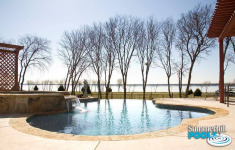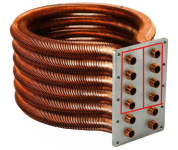To heat the spa with the filtration system and run the jets with the 5 hp pump, you would need 2 spa suctions and 2 spa returns.I can do that but will require some plumbing changes. I have 3 suctions - infinity basin, main pool, spa.
I would change the filter pump to 3 hp and install a 3.5 lb check valve bypass on the heater.
The check valve will stay closed until the water flow through the heater hits about 48 GPM and then it will begin to open.
At 120 GPM, you might have about 50 GPM through the heater and maybe 70 through the bypass.
Use a heater flow switch to be safe.

Last edited:















